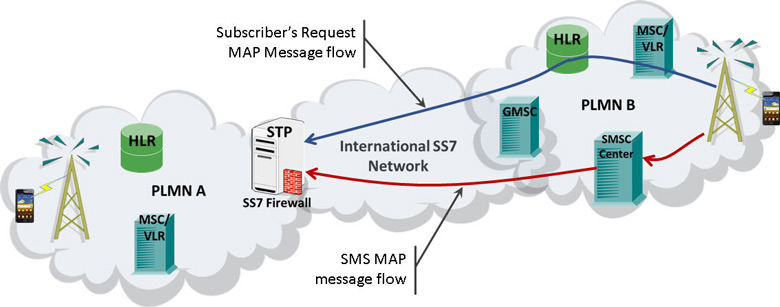Ensuring SS7 Network Security
Gaithersburg, Maryland, USA - November 13, 2018 - GL Communications Inc. a global leader in telecom test and measurement solutions, providing information about vulnerabilities in SS7 (SIGTRAN) networks and insights into GL's MAPS™ SS7 solution capable of generating such real-time SS7 attacks by simulating various SS7 messages and manipulation of SCCP, MAP, CAP parameters. In addition, GL's Network Monitoring and Surveillance Solution can be deployed at probe level to monitor the SS7 traffic.

Wireless - SS7 Network Architecture
Speaking to the press, Mr. Vijay Kulkarni CEO of GL Communications Inc. said “Mobile communication infrastructures have evolved from traditional circuit-based networks into broadband and IP-based networks. In this process SIGTRAN was proposed for carrying SS7 PSTN signaling over IP. The vulnerabilities in SS7 signaling protocol was inherited to SIGTRAN thus susceptible for intruders’ attacks. An intruder can send, intercept and alter SS7 messages by executing various attacks against mobile networks and their subscribers. Although large scale attacks are not common, still they may significantly impact individual subscribers with financial loss, confidential data leaks, and/or disruption of communication services (voice and sms).
GL’s MAPS™ Protocol Simulator and NetSurveyorweb™ monitoring system provides a complete solution required to ensure SS7 network security”, said Mr. Vijay Kulkarni CEO of GL Communications. “GL’s MAPS™ (SS7 MAP/CAP) test platform supports inbuilt pre-processing tools that allow the users to customize the SS7 protocol specific parameters and create custom scripts to perform real-time fraud scenarios addressing some critical attacks. Examples of such attacks include tracking a subscriber’s location, data theft, eavesdropping, text interception, unstructured supplementary service data (USSD) forgery requests, and voice call redirection.
Besides NetSurveyorWeb™ Lite can be deployed along with Protocol analyzer across the network at probe level for monitoring the SS7 traffic for detecting and reporting un-lawful activities, identify fraudulent calls (call records), data retention, targeted surveillance, and study usage patterns with customized tabular and graphical report generation.
Application Features
MAPS™ Protocol Simulator
- Multi-protocol, multi-interface signaling and traffic simulation and call control
- High density traffic simulation supporting various traffic types over IP (RTP, GTP), ATM, & TDM, Mobile networks
- Auto generate massive number of subscriber profiles using internal Database, and CSV methods
- Automated stress/load testing capabilities through Load Generation and Bulk Call Simulation
- Customization of Test Parameters, Call Flow, and Protocol Messages Using Pre-Processing Tools
- Call Statistics, Events, Link Status, User Defined Statistics
- Centralized Control and Remote Access with CLIs / APIs such as the Python, Java, TCL and others, using MAPS™ client-server functionality
NetSurveyorWeb™ Monitoring System
- Comprehensive analysis from overall network health to detailed protocol monitoring
- Call Detail Records, fraud detection and location, remote protocol analysis and troubleshooting, real-time signaling monitor, traffic optimization engineering, and statistics
- Determine actual call signaling routes to verify network functionality under all situations including congestion and loss of SS7 nodes.
- Revenue and billing verification, alarm monitoring, intrusive testing
- Quality of service measurements, call trace and recording
- Reports are displayed both in tabular and graphical formats; customize reports and graphs based on SQL queries
- Graphs provided for Call Completion Ratio, Answer Call, Listening MOS, Conversational MOS, Failure Cause, and Call Duration
- Real-time data displays information such as called number, calling number, source & destination IP address, RTP packet details, call flow graph, frame decodes and more
- Apply single or multiple filters for data analysis; use logical operators between filters
- Ability to export both graphical and tabular reports view as PDF
 Back to Press Releases Index Page
Back to Press Releases Index Page